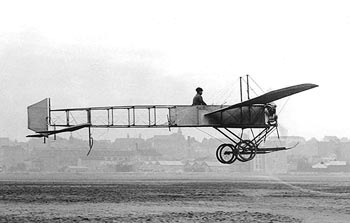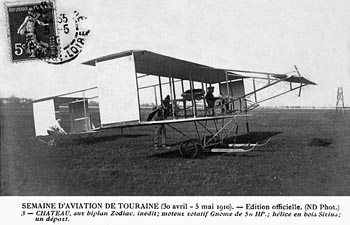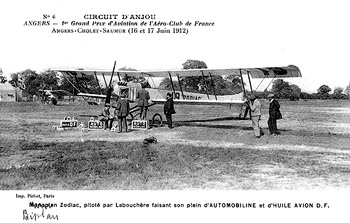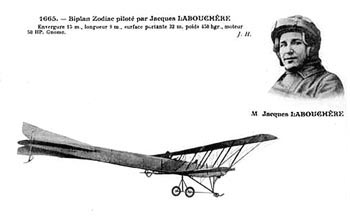
Zodiactraite - draft
Maurice Mallet : Zodiac In 1879, a Frenchman made a maiden balloon fligth that changed the course of his life forever. His name was Maurice MALLET, and in 1896 he founded the company that later became Zodiac. MALLET struck up a friendship with one of the century's great balloonists, Paul JOVIS. Together, they set up a ballooning society named the Union Aéronautique de France. Having observed his compatriots' new taste for balloon ascents, he formed a partnership with two friends under the name Société Mallet, Mélandri et de Pitray. Installed in the Bois de Boulogne in spring 1897, their "ballooning park" was an immediate success. Renamed Ateliers de Constructions Aéronautiques Maurice Mallet in 1899, the Mallet workshops prospered thanks to regular orders from the Aéro-Club de France, the French flying club. A firm believer in the future of aerial navigation, Mallet convinced his young aeronaut friends to join him in a business partnership. Under an agreement between Maurice Mallet and Count Henri de la Vaulx, the Société Française des Ballons Dirigeables ("French Airship Company") was formed on March 5, 1908. Mallet's workshops were among the only ones in their day to develop into a full-fledged industrial concern. Mallet set his sights on two previously undeveloped markets: private individuals and large commercial and industrial firms, to which he suggested using airships as a novel and conspicuous advertising medium. His craft-the first prototype of the future Zodiac sport airships-was so easy to transport and dismantle that it established the firm's reputation. Designed on the same principles, the first collapsible Zodiac balloon-the Zodiac I-was built in 1909. The origin of its trade name, registered in 1909, and its logo-the signs of the Zodiac with an airship moving across them-remain an enigma, as does the choice of the English spelling "Zodiac." The company laid the foundations of its foreign sales organization (Balkan States, Japan, Canada, United States) consisting of sole agents. By 1909, Mallet had carved out a specialized market niche as manufacturer of compact "autoballoons." Keen to establish his firm's presence in all areas of the conquest of the skies, Mallet changed its name in 1909 to Société Française de Ballons Dirigeables et d'Aviation Zodiac, incorporating the trade name into the company name for the first time. The workshops, in turn, were taken over and renamed Société Zodiac. The year 1911 marked the end of a transition. The enterprise was no longer a craft venture producing to order. It was now an industrial company manufacturing in large runs and bidding for procurement contracts. In the meantime, Zodiac had diversified into the manufacture of monoplanes and biplanes. This was an unusual choice, as the airship fraternity generally disdained aviation enthusiasts-and vice versa. But Maurice Mallet and his engineers harbored the same eclectic passion for lighter- and heavier-than-air. In 1909, they built the first biplane for the famous aviator Maurice Farman. Swept along by this new momentum, the company even tried its hand at making hydroplanes in 1912 and engines (under a Pickers license) in 1913-14. This initial diversification, however, temporarily ended on the eve of the World War I. At the request of the military authorities, Zodiac suspended these trial ventures and focused exclusively on balloon production. While France's entry into the war meant new contracts, it actually made Zodiac's financial position more precarious. The use of airships soon proved disappointing for strategic bombing. Zodiac created an airplane manufacturing unit wholly separate from its balloon operations. By 1916, the company was delivering two airplanes per week. At the signing of the Armistice in November 1918, Zodiac-like all defense contractors-had to plan for peacetime. Orders, however, failed to come. Worse still, the aeronautical market collapsed. Not until mid-1927 did business return to a level in line with Zodiac's corporate objectives. As well as observation balloons, Zodiac was now supplying the French Navy with patrol craft. The V10 semi-rigid airship, completed in 1930, was the most remarkable innovation of this period.
Zodiac Gallery
 Zodiac, 1910 download a 1000pixel image
 Zodiac, 1910 download a 1000pixel image
 Zodiac, 1912 download a 1000pixel image
 Zodiac, 1912 download a 1000pixel image
 Zodiac, 1912
|
© Copyright 1999-2002 CTIE - All Rights Reserved - Caution |